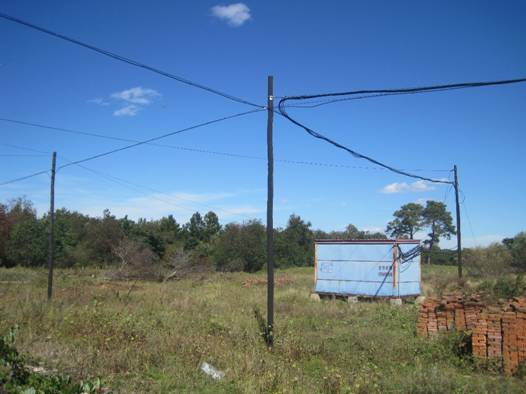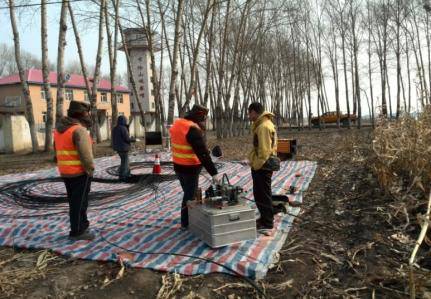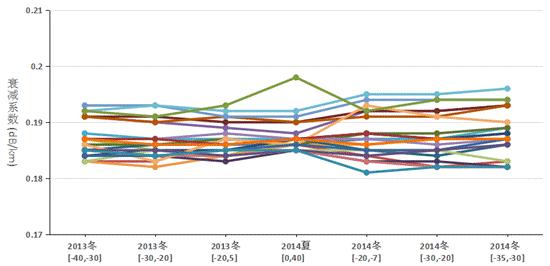Abstract: Optic fibre and cable products consist of doped silica fibre glass layer, polymer mechanical buffer coating, PBT bushing, water-resistant special fibre paste and cable paste, and mechanical stress resistant structure device, etc. The main points of the product focus on the selection of raw materials, test analysis of optical transmission performance, high-speed cable forming technology and so on. In the environment at extremely low temperature, the limiting factors for raw material selection of fibre, design parameters of cable, and the processing technology may be amplified, resulting in the increase of attenuation, incompatibility of material and poor maintenance performance, which directly affect the transmission quality.
ICCSZ NewsOptic fibre and cableproducts consist of doped silica fiber glass layer, polymer mechanical buffer coating, PBT bushing, water-resistant special fibre paste and cable paste, and mechanical stress resistant structure device, etc. The main points of the product focus on the selection of raw materials, test analysis of optical transmission performance, high-speed cable forming technology and so on. In the environment at extremely low temperature, the limiting factors for raw material selection of fibre, design parameters of cable, and the processing technology may be amplified, resulting in the increase of attenuation, incompatibility of material and poor maintenance performance, which directly affect the transmission quality.
In many areas such as northeast China and northwest China where the winter is long and cold, and where there is a large area of alpine and diurnal temperature difference, fibre optic cables and connecting equipment of ordinary materials and structures were generally used to deploy the actual networks in the past. After long-term service, some optical fibre cables present the problems of transmission performance degradation and variation of temperature characteristics, which severely restrict the deployment and service of advanced optical fibre transmission systems and also become a prominent challenge in R & D and manufacturing ofoptical fibre and cable.
Therefore, research on long-term durability of optical fibre and cable in alpine region is required urgently in the industry to make up the gap thereof as soon as possible, and to provide reference for the operators, design units andoptical fiber and cablemanufacturers, further to improve the quality and availability of transmission network and to promote the development of optical fiber and cable industry and communication network in our country.
Establishing a long-term observation and research platform in Heihe coastal area
China UnicomNetwork Research Institute / CITC unite, cooperating with YOFC, launched the research project on the long-term performance of optical fibre and cable in cold region since 2013. With the strong support of Heilongjiang Unicom Operation and Maintenance Department, a long-term observation and research platform for the performance of optical fibre and cable in the alpine region was established along Heilongjiang in Heihe City, Heilongjiang Province and the relevant research was carried out.
Heihe City is located in the northwest of Heilongjiang Province, where the climate is very harsh and the annual average temperature is -1.3°C ~ -0.4°C. There, January is the coldest, with an average temperature of -25.4 ~ -23.8°C, and the lowest temperature may reach -40°C; July is the hottest with an average temperature of 19.4 ~ 21.3°C; the annual temperature difference is 44.2 ~ 46.7°C, which is rare in other areas in China, and is an ideal area for the project.
The long-term observation and research platform for optical cable in cold area relies on the existing unattended module local transmission room of Heihe Unicom Branch, as shown in Fig.1, with the cables laid on the existing network pole lines overhead, ensuring that ambient temperature fluctuation can directly act on the optical cable to obtain the most direct data. The length of the pole line is 1.4km. The optical cable is looped back to the computer room from the remote post-ring and has a total length of about 2.8km.

Fig.1 Long-term observation and research platform for research on long-term performance of optical cable in Heihe cold area
Long-term observation and research platform is equipped with two sets of remote monitoring system, among which the temperature monitoring system can monitor and record the temperature fluctuation at the optical cable in real time, and be able to query and save remote data in real time; The optical monitoring system, based on EXFO's OTDR module and optical switch, automatically monitors the optical link performance with all newly laid test optical cables connected to the 32-channel optical switch interfaces on the optical monitoring system after the optical cables have been terminated in the computer room. Through the monitoring of the long-term observation station to the attenuation of the optical cable, the monitoring system acquires the data of the performance change of theoptical fibre and cableand remotely transmits it toChina UnicomNetwork Research Institute for data processing and analysis (Fig. 2 Real-time test curve of one-core optical fibre monitored by the monitoring system), further discussing the effects of different factors on the cable products at low temperature.

Fig.2 Real-time monitoring curve of fibre attenuation coefficient
In order to study the durability of cable structure, various types of fibre and other factors to the harsh environment, considering the research needs,China Unicomanalyzed the models of optical fibre and cable deployed in existing network, used optical fibre and cable products which fully reflect the different types of structures, different processing techniques, different materials standard to actually arrange a total of eight optical cables of four types (GYTA, GYA, leather and air-blowing micro-cable), involving three types of fibre (OD 245μm G.657.A2 and G.652.D, OD 200 μm G.657.A2), two types of fibre pastes (-40°C, -60°C), and three sleeve sizes (1.7 mm, 1.9 mm and 2.1 mm). By comparing the change of attenuation performance of optical fibre cables under different temperature conditions, the influence of different factors (fibre type, fibre paste temperature, cable paste temperature, fibre OD, sleeve size, etc.) on the performance of the optical fibre and cable was observed and recorded.
After the completion of the follow-up study period,China Unicomwill also recycle the samples for careful analysis in the laboratory, to study the microscopic structure change, material compatibility and mechanical performance data, and to fully test the temperature performance metrics of the samples.
Preliminary results
Air blowing micro-cable has obvious advantages in low temperature
At present, although the construction of conventional optical cable has matured, the use of air-blowing technology is less. Air-blowing fibre optic cable has the advantages of large fibre density, easy construction, small occupation of pipeline resources, etc., which have been widely used in the world. In this project,China Unicomcompleted the laying of air-blowing micro-cables at 7°C in October 2013 and the unidirectional air-blowing distance is up to 2km, which fully verified the feasibility of air blowing technology at low temperature. Figure 3 shows the laying site of air-blowing cable.

Fig. 3 Laying site of air-blowing cable
Observation and research results from 2013 to 2017 will be completed soon
Since the completion of the platform construction in the winter of 2013, data collection has been started. Up to now, the first period of research and data collection in the past four years have been completed. All the optical cables are operating normally, and the temperature and optical monitoring system is operating normally.
According to the recent operating and monitoring situation of optical fibre and cable, and the tracking of fibre optic cable in different attenuation coefficient with temperature changes, the following preliminary conclusions can be obtained: By monitoring the attenuation and temperature data, it is found that the attenuation varies with the temperature, For GYA and GYTA cables in the 1.7mm, 1.9mm and 2.1mm sleeve, the attenuation of optical fibre varies little with the temperature. Fig. 4 shows the monitoring data of the GYTA optical fibre cable in part of period. The detailed results of the first observation and study period in 2013-2017 are about to be finalized and analyzed and will be discussed and promoted.

Fig.4 Performance changes of GYTA optical cable
Research expectations and prospects
After the completion of the research project, its research results will directly serve the application selection of optical cable products of China's telecommunication operators and promote the development of China's optical fiber and cable industry. The corresponding products are preferentially used in the alpine regions of the three northeastern provinces of China, Inner Mongolia, northern Xinjiang and the Qinghai-Tibet Plateau to enhance the transmission quality of the communication networks in the severe cold environment in winter to fill the technical gaps in China and to provide a comprehensive informatization for China's society. It also makes outstanding contributions to economic and social development in the ethnic minority areas.
After mastering the key technologies related to optic fibre and cables in cold regions,China Unicomwill enhance the maintainability of optic fibre and cable networks in cold regions and construct high-quality low-temperature-resistant optical fibre and cables to maintain the stability of transmission performance for a long time and to reduce the workload of cable network maintenance in alpine regions, further reducing the transmission equipment investment. At the same time, it can also help Chinese optic fibre and cable products can get the core competitiveness under the conditions of cold regions, and promote the export of optical cables for the cold regions of northern Europe, North America and Russia.
Authors: Shen Shikui, Wang Guangquan, He Yongtao, Zhi Chunlong, Xu Weijie, Chang Ruilin, Sun Dehua, Han Feipeng
-
2025.09.12YOFC Showcases Diverse End-to-End Portfolio at CIOE 2025
-
2025.06.19YOFC Unveils “AI-2030” Strategy to Drive the Next Generation of AI-Ready Optical Infrastructure
-
2025.04.30YOFC Releases 2024 ESG Report, Advancing Innovation with Purpose and Responsibility
-
2025.04.28New Breakthrough! YOFC Multi-mode Fibre Achieves 212G VCSEL High-Speed Transmission
-
2025.04.03OFC2025 | YOFC State Key Laboratory Publishes Multiple High-Level Research Papers
